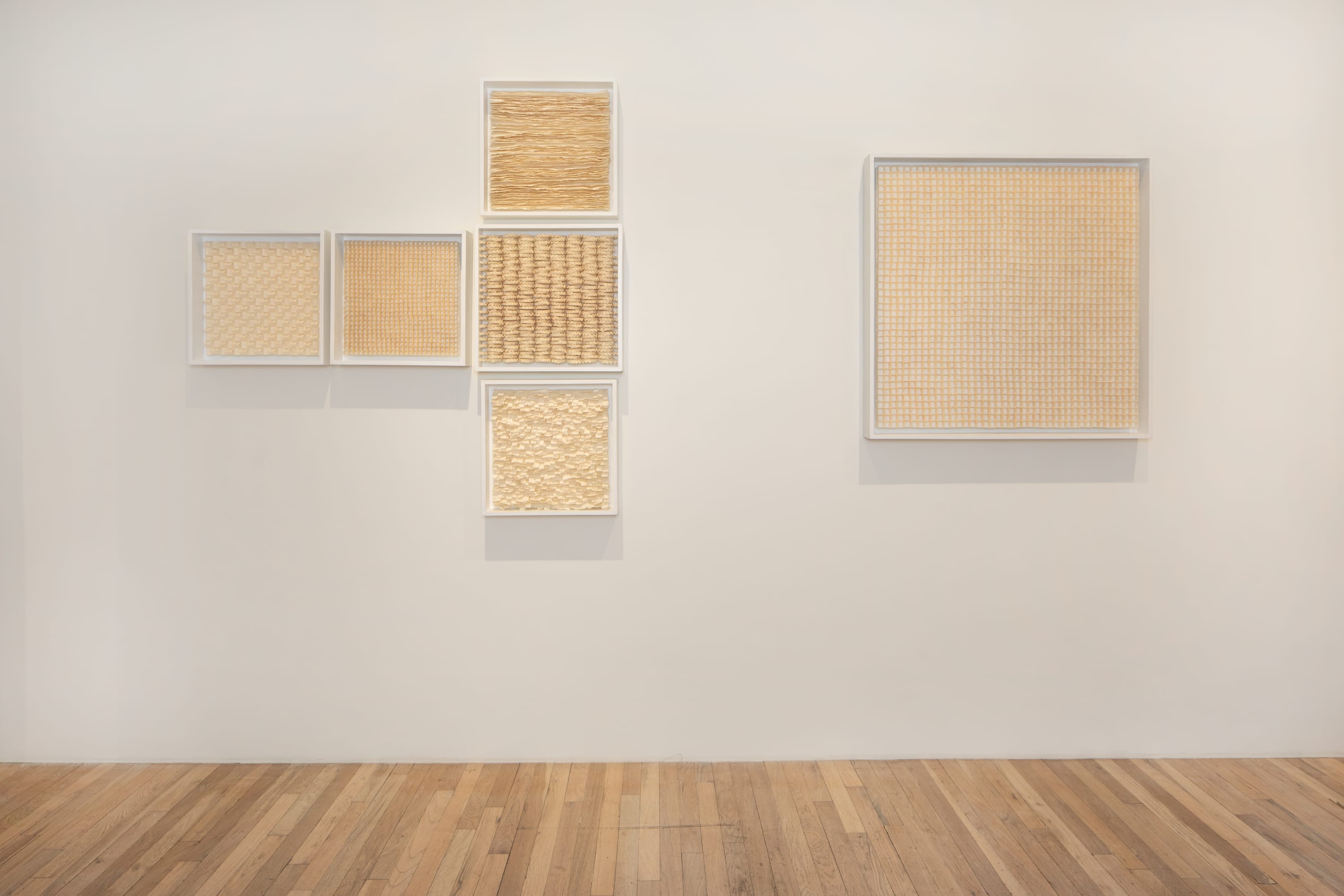-
RHYTHMS OF WHITE
BY RAKUKO NAITO -
-
The celebration of Rhythms of White, her solo exhibition at Tayloe Piggott Gallery, will not mark Rakuko Naito’s first visit to Wyoming. She and her husband, artist Tadaaki Kuwayama, were here in 1958, en route from Tokyo to New York, where they have lived and worked for over sixty years. A friend of Rakuko’s had a daughter living on a ranch in Wyoming, and recommended a visit. So, after setting foot for the first time in the United States in Los Angeles, she and Tadaaki boarded a Greyhound bus and traveled to Buffalo, Wyoming for a week on a cattle ranch.
Rakuko Naito: It was really quite a large ranch. Every morning we had breakfast with the cowboys. It was a really nice experience. I think we stayed about one week. Then we took another bus, and it was maybe three days before we arrived in New York. We really loved Wyoming. I thought, when will we ever have an occasion to visit here again? And now, years later, decades later, here we are!
-
Naito’s work, rhythmic folds of rice paper sculptures designed to hang on the wall, reside somewhere between our notion of “drawing” and “sculpture.” This exhibition presents a large selection of work from the artist’s oeuvre which has never been shown together. Each work investigates the properties of different kinds of Japanese rice paper, with different shapes and forms repeated in different sized squares. The effect, both in each singular work and the exhibition altogether, is mesmerizing. In one work, thousands of tiny folds create a circular “gig-zag” checkerboard pattern, in another, a sea of perfectly formed fans creates a veritable ocean of white. Overall, rhythms form in the folds and undulations of rice paper. Without making a sound, the monochromatic assemblages of white, cream, and taupe draw the viewer’s eye in and out in a harmonic, meditative symphony.
-
Naito’s career has spanned many methods and materials, all with the same evident dedication to organization and inventiveness. Beginning as an optical art painter in the early sixties, she created works that emphasized flatness and downplayed the artist’s hand. With close friend Sam Francis, she explored acrylics, spray paint, and masking tape, eventually focusing her style on the delicate, monochromatic paper assemblages that she works in today. Ultimately living the lives of avant-garde artists in lower Manhattan, Naito chuckles, saying, “We did not do so consciously, but I guess we did!”
-
With a natural affinity for order and structure, Naito joins a circle of artists such as Mel Bochner, Eve Hesse, and Sol LeWitt. Naito’s repetition of actions, decisions, and manipulated forms combined with her avoidance of narrative is the basis for her investigations of rice paper. Naito has said, “I feel natural forms and textures have a reality that cannot be completed by trying to paint or drawn by hand. I try to experiment and manipulate materials to create my own world.”
-
Naito’s first solo exhibition was at the World House Gallery, New York, in 1965. Since then, she has exhibited all over the world, including many group exhibitions, such as the Mies-Van-der-Rohe Haus, “White Box,” Berlin, Germany, 2019; Monocromos: de Malevich al presente, Museo Nacional Centro de Arte Reina Sofía, 2004; the International Women Artists' Biennale, Incheon, Korea 2009; Optic Nerve: Perceptual Art of the 1960s, Columbus Museum of Art, Columbus, Ohio 2007; Optical Edge, Pratt Manhattan Gallery, New York , 2007; A Moment Becomes Eternity, Bergen Museum, New Jersey,1993; Tokyo International Biennale (1974); Black & White, Wadsworth Atheneum Museum of Art, Hartford, Connecticut (1966); and Motion and Movement, Contemporary Art Center, Cincinnati, Ohio (1964).
-

-
Artist Feature: Rakuko Naito
Join our mailing list
* denotes required fields
We will process the personal data you have supplied in accordance with our privacy policy (available on request). You can unsubscribe or change your preferences at any time by clicking the link in our emails.

























